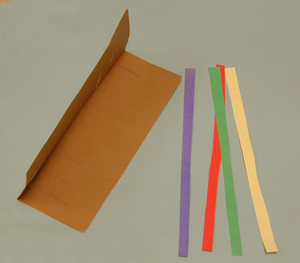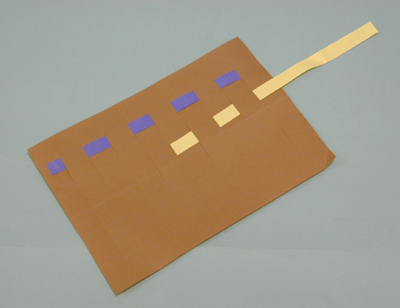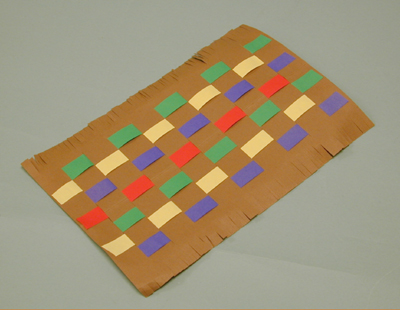Kente Cloth Project
What is it? Kente cloth is a hand woven cloth designed to reflect the history, ethics, religious beliefs, and many other aspects of Asante culture in Ghana, Africa. Kente comes from the Asante word kenten, meaning basket. The first kente cloth was said to be made from raffia, fibrous strands from the Raffia palm, making the cloth look like a kenten, or basket. Today, narrow strips of cloth about four inches wide are used. The cloths come in a variety of colors and are sewn together to make a design.
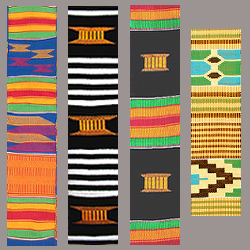
A bit of history
The origin is explained in a legend about a man, Ota Karaban and his friend, Kwaku Ameyaw. They learned to weave by watching a spider weave its web. They then wove raffia strands like the spider did. Starting in the 12th Century C.E., the Asante people began to use materials to weave kente. The cloth was considered royal and worn by special figures on particular occasions. Today, it is frequently worn in Africa as well as the United States.
Materials and Techniques
Kente is woven by hand using a loom made out of wood. Various colors and qualities of yarn are used. Kente made from silk yarn is considered very prestigious. In the past, cotton was locally grown; today, factories make most of the cotton used for Kente. The basic technique is to take several strips of cloth and sew them together by hand until a large cloth is made.
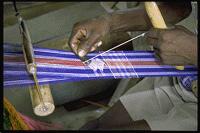
Wearing Kente
Kente was only worn to special events or by royalty in past times. It is both time and fiscally expensive to produce Kente cloth and is still considered prestigious to wear today. Men and women wear the cloth differently. Men wear the cloth covered around their body, but leave their right should or arm unexposed. Women wrap the cloth around their body as well but wear a shirt over it. Many bright colors of cloth are sewn together to make patterns representing their culture’s morals, philosophy, history, etc. Each particular design and color represents a meaning. For example:
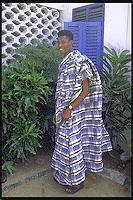 Rectangle: represents territorial power of a male ruler
Rectangle: represents territorial power of a male ruler
Zigzag: represents political wisdom
Pink: femininity which is associated with caring and tenderness
Blue: peace and harmony
Green: good health
Yellow: wealth and energy
Directions for making Kente cloth using colored paper
Materials
- Colored construction paper: red, green, orange, yellow, brown, black
- Scissors
- Glue
- Crayons in an assortment of colors
Construction
|
1. Cut black or brown sheets of construction paper into 9X12in pieces. 2. Cut remaining colors into strips 1/2in by 12 in. 3. Fold the black or brown construction paper in half horizontally, and make cuts approximately 1 in. apart. Make sure to leave 2 in. at the top of each cut.
4. Weave the other colors as tightly as possible to form a checkerboard design. 5. Glue down the ends so that the weave does not come apart. 6. Have the students use crayons to make designs in the squares. It is helpful to have a book of African Patterns as an example,or better yet, a piece of actual Kente cloth.
7. Finally, students can take scissors and make fringes along the long sides of the paper.
Source: Boateng, Faustine Ama, PhD. Asante. (1996). New York: The Rosen Publishing Group, Inc.
|
|

